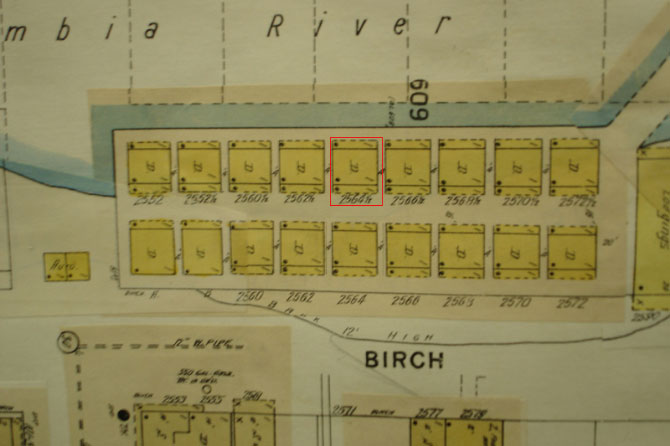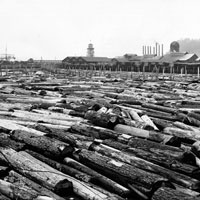From India to Hindoo Alley, Oregon
After graduating from Khalsa College in Amritsar, Punjab and encouragement from his father, Bhagat Singh Thind left India for Manila, Philippines on March 5, 1912 as a US Protectorate at the age of 19 years. He remained in Manila for nine months working for five dollars a day before resuming his journey aboard the vessel “Minnesota” to America. He arrived at Seattle, Washington on July 4, 1913.
Life at Hindoo Alley
From Seattle, Dr. Thind worked at several lumber mills. He eventually found his way, along with other Sikhs to Astoria, Oregon in area known as Alderbrook. Because of the high concentration of East Indians there, Alderbrook was known as “Hindoo Alley”.
There was a central cookhouse where the workers ate Indian food. Most men were single, and on regular occasions sent their earnings back to their families in India. The Astoria community considered the Hindus “vastly interesting and peaceful.” However, most Indians kept to themselves and did not mix with the citizens. During their free time the Indians would hold wrestling bouts in Rosenberg Hall, which was located in central Astoria.
Dr. Thind lived at 2564 Birch Street, which was adjacent to the mills. There were 12 bunkhouses along the waterfront between 51st and 52nd Streets on Birch where the most of the Hindus lived. Dr. Thind lived with 3 other workers, as was the custom to having four men per house. (See illustrations below).
On April 23, 1913, some patriotic and enlightened Indians held a meeting in Astoria with the objective to liberate India, with the force of arms, from British colonialism. This group would eventually be known as Gadar. Dr. Thind would become one of the original members, but only in a nonviolent method of lecturing for India’s independence throughout the Northwest and in later years throughout the USA.

Diagram map of the houses where Dr. Thind resided. He lived in house #2564 1/2 (click for larger photo)
Hammond Lumber Company
Dr. Thind found employment at the Hammond Lumber Company in early 1914. It was estimated that there might have been nearly 100 Hindus among the 600 employees of different nationalities who worked for the mill. Dr. Thind spent six years (1914-1920) working for Hammond Lumber where the average pay was about $2.00 per day for a 10-hour workday. Unfortunately, the mill burned to the ground on September 11, 1922.
Despite the low pay, Dr. Thind earned enough money to start attending classes at the University of California at Berkeley. There, he studied psychology, philosophy, and many other related subjects. Though he obtained his degree, his primary goal was to study law. There was one primary obstacle – lawyers had to be US citizens. This initiated Dr. Thind’s 22-year struggle for American citizenship. It is this struggle that occupies a prominent historical place in American Immigration history.
Hammond Lumber Company in early 1914



Present day pictures of what was the Hammond Lumber Company



